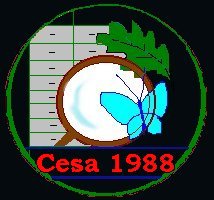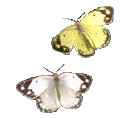News
of the Month
C
entre for Entomological Studies Ankara
Nr.5, December 2000
"News of the month" appears monthly in the internet only. Maintained by
Prof. Dr. Ahmet Ömer KoçakBack numbers:
1 2 3 43Cesa is an independent international research Centre, Museum and Library-
founder: Prof. Dr. Ahmet Ömer Koçak a_kocak@mailcity.com
"The truest guide in the world is the science" (Mustafa Kemal Atatürk)
" Ignorance is the curse of God, knowledge the wing wherewith we fly to heaven" (Shakespeare)

 Do you know?
Do you know?
![]() Foreigners must submit their application forms to the Turkish Embassy in their own country, if they want to carry out a research - or hunting, collecting insects, picking flowery plants etc. as hobby (!?) - in Turkey.
Foreigners must submit their application forms to the Turkish Embassy in their own country, if they want to carry out a research - or hunting, collecting insects, picking flowery plants etc. as hobby (!?) - in Turkey.
***
Do you know?
"Science Citation Index" against ICZN, and list of "worthless" Biological journals in the World
*******
Search Engines
: altavista § findwhat § mamma § yahoo § mailcity § tripod § about § alltheweb § excite § webcrawler -
 Weather: Central America § Europe § Middle East § Africa § Asia § Australia § Ankara / Currency: $-TL (Telsim - Turkcell for e-mail )
Weather: Central America § Europe § Middle East § Africa § Asia § Australia § Ankara / Currency: $-TL (Telsim - Turkcell for e-mail )

Researches on the database of the Holarctic butterflies are continuing
.*************
Amateurs with Ms. Banu Tolan!

The Peacock (Inachis io)

You cannot possibly mistake this beautiful insect for any other European butterfly, for on each of its four wings it has a large eye-like spot, very much like the markings on the tail of a peacock. But the under- side of the wings is quite differently coloured. It is almost as black as charcoal. And the consequence is that when the butterfly sits on the trunk of a tree, with its wings folded over its back, you cannot possibly see it unless you look at it sideways.
Peacock butterflies are common in August and September, and again in spring, after they have passed through their long winter sleep. They are very fond of sitting on thistle blossoms when the sun is shining, with their wings widely spread. And you may often see them resting on ivy bloom, or sipping the sweet juices of over-ripe plums. During the winter they hide away in outhouses, and sheds, and faggot-stacks. The caterpillars, which feed in large companies, which feed in large companies on nettle leaves, are black in colour, sprinkled with little white dots, and are quite as thorny as those of the two tortoiseshells. Look for them in June and July. The chrysalids are green, with their heads and bodies rather brighter than their tails, and with a number of gold spots.

News from Abroad

A scientific agreement between Cesa and the Institute of Zoology, Almaty have been signed. For further information see
: Kazachstan StudiesList of the Butterflies of Dschungarian Ala Tau (East Kazachstan)
*********
Butterflies of the South- East Turkey A CD-Rom under preparation.
*********
Scientific Activities of the Cesa
 Butterflies of Cyprus 1998 by Eddie John. Published by the Amateur Entomologists' Society, London.
Butterflies of Cyprus 1998 by Eddie John. Published by the Amateur Entomologists' Society, London.
*******
Book Hotels & Inns: Africa § Asia § Europe § Australia & South Pacific §United States § Canada § Central and South America § Bahamas & Carribean § Resorts § Lonely Planet
